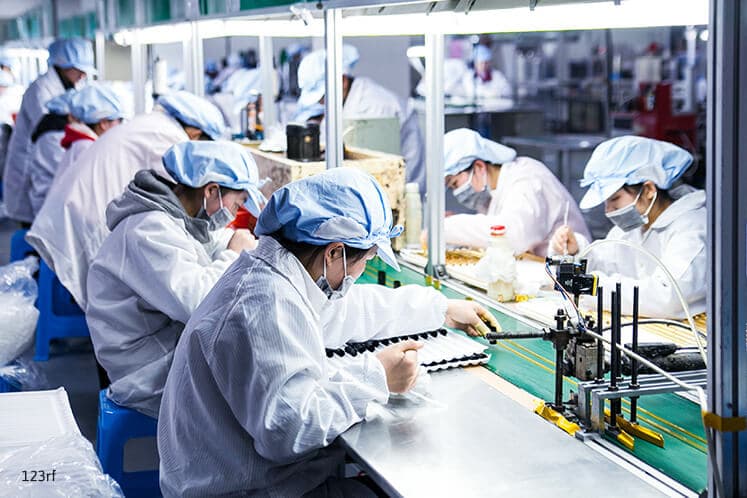
KUALA LUMPUR (Dec 3): Asean manufacturing conditions saw a marginal improvement in November as output grew at the quickest pace since June, coupled with the new orders expanded, according to an industry survey.
The headline Nikkei Asean Manufacturing Purchasing Managers’ Index (PMI) — a composite single-figure indicator of manufacturing performance — rose to 50.4 in November (from 49.8 in October), signalling a slight improvement in the health of the manufacturing sector.
A reading above 50 indicates expansion in manufacturing activity, while a reading below 50 indicates contraction.
IHS Markit, which compiles the survey said the latest data followed the first decline in performance in ten months during October, suggesting a modest rebound of ASEAN manufacturing growth.
“ASEAN countries saw a small rebound in manufacturing performance in November, after October recorded a decline. However, the rate of growth was still weaker than those seen earlier in the year, as overall orders increased only fractionally. Meanwhile, export demand continued to deteriorate in line with the global trade slowdown.
“On a positive note, input cost inflation cooled following accelerations in the prior four months. Manufacturers responded with a smaller rise in output prices. However, concerns were voiced over the supply of raw materials, as some companies were unable to source all their inputs. A continuation of supply shortages may harm production lines, and hence output, if it continues,” David Owen, an economist at IHS Markit, said in a statement today.
He said output grew at the quickest pace since June during November, with five of the seven countries monitored by the survey recording an improvement in production levels.
"New orders expanded at a fractional pace, though this marked an improvement from a decline in October. Export sales meanwhile declined for the fourth successive month, albeit marginally," he said.
Vietnam led the ASEAN manufacturing growth as the country’s manufacturing sector recorded the sharpest increase in output in over seven years.
Philippines came second in the rankings with a solid rate of expansion that was similar to October. Myanmar rose in the league table to third place, as softer inflationary pressures allowed the sector to rebound from October’s decline.
Meanwhile, Indonesia slipped to fourth place as growth slowed to a five-month low. Thailand remained in fifth position, registering a softer decline in operating conditions during November.
Malaysia’s manufacturing sector deteriorated at the fastest pace since May. Singapore stayed at the bottom of the rankings albeit with conditions worsening at a slower rate than in October.
The rate of input price inflation cooled in November, after recorded rising for four consecutive months. However, the uptick in prices remained sharp though, with all countries except Thailand reporting increased cost burdens. Higher raw material prices remained a key factor, with some companies reporting reduced availability of some materials.
The output charges rose at a slower pace in November. That said, none of the seven countries saw selling prices fall, as Thailand and Vietnam’s two-month sequence of lower charges ended.
Employment growth remained weak in November, as only Vietnam recorded a strong expansion of workforces. Myanmar, Thailand and Singapore continued to reduce staff levels. Nevertheless, firms still managed to work through their outstanding business, according to the report.
“Looking ahead, confidence towards the business outlook across ASEAN manufacturing firms improved to a six-month high in November. Notably, Vietnam and Thailand registered the highest sentiment since February and March 2016, respectively,” said the report.